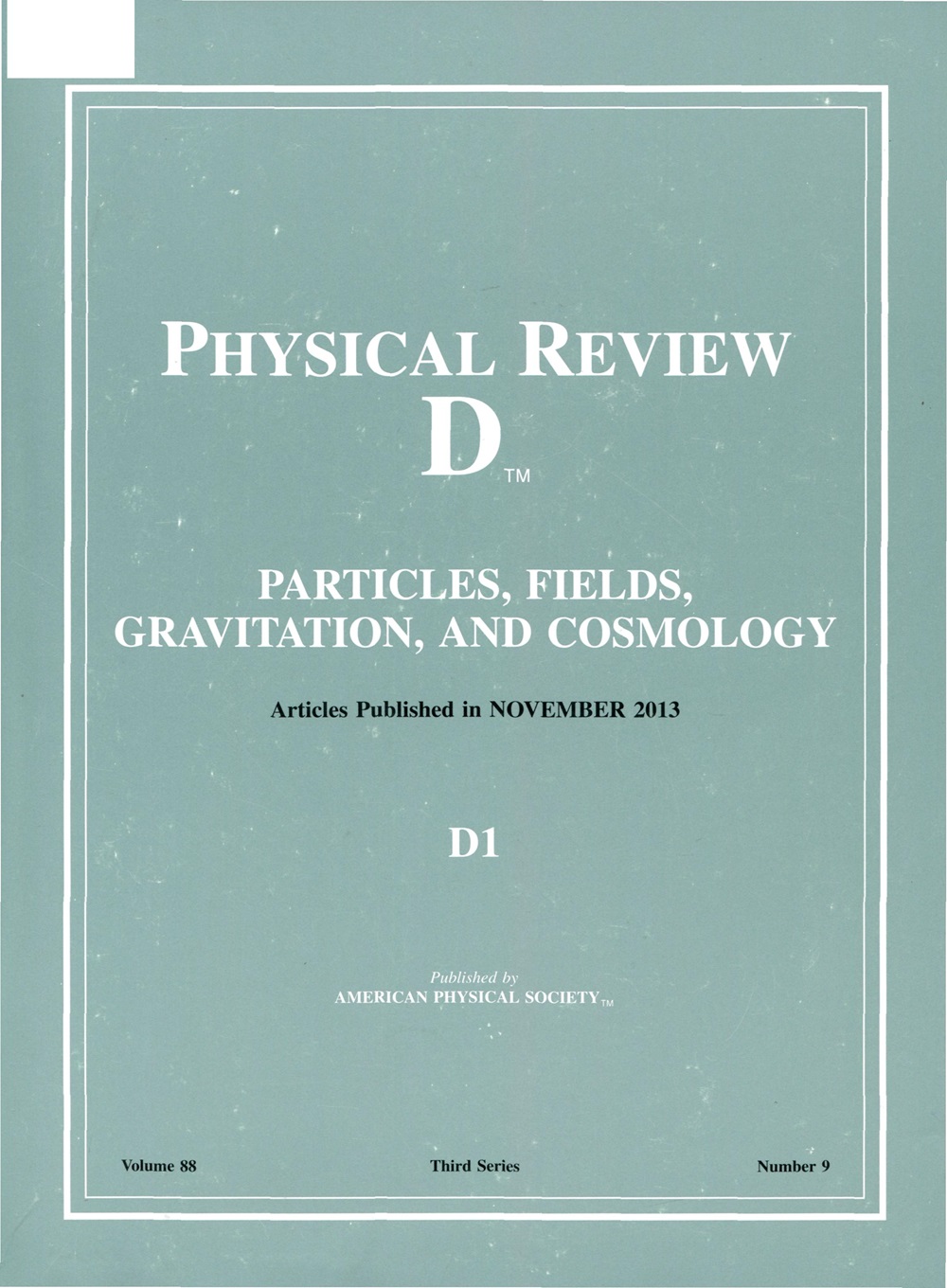脉冲星定时阵列对引力波背景各向异性的敏感性
IF 5
2区 物理与天体物理
Q1 Physics and Astronomy
引用次数: 0
摘要
脉冲星定时阵列(PTA)观测最近收集了大量证据,证明在nHz频段存在引力波背景。在这个信号中寻找各向异性是确定其起源的关键,特别是区分可能的天体物理来源和宇宙学来源。在这项工作中,我们使用脉冲星时间延迟的全协方差矩阵来评估当前和未来脉冲星时间阵列对这种各向异性的敏感性。虽然目前的脉冲星定时阵列只能对偶极子和四极子设置适度的信息约束,但我们表明,在不久的将来,可以实现几个低多极子的百分比级精度。此外,我们还证明了引力波背景的各向异性和Hellings-Downs角相关(表明引力波的存在)是近似不相关的,因此可以独立重建。这些结果可以用一个快速的、公开可用的python代码来重现,以预测PTA配置的约束能力。2025年由美国物理学会出版本文章由计算机程序翻译,如有差异,请以英文原文为准。
Pulsar timing array sensitivity to anisotropies in the gravitational wave background
Pulsar timing array (PTA) observations have recently gathered substantial evidence for the existence of a gravitational wave background in the nHz frequency band. Searching for anisotropies in this signal is key to determining its origin and in particular to distinguish possible astrophysical from cosmological sources. In this work, we assess the sensitivity of current and future pulsar timing arrays to such anisotropies using the full covariance matrix of pulsar timing delays. While current day pulsar timing arrays can only set mildly informative constraints on the dipole and quadrupole, we show that percent-level accuracy for several low multipoles can be achieved in the near future. Moreover, we demonstrate that anisotropies in the gravitational wave background and the Hellings-Downs angular correlation, indicating the presence of gravitational waves, are approximately uncorrelated and can hence be reconstructed independently. These results can be reproduced with fast, a publicly available ython code to forecast the constraining power of PTA configurations. Published by the American Physical Society 2025
求助全文
通过发布文献求助,成功后即可免费获取论文全文。
去求助
来源期刊

Physical Review D
物理-天文与天体物理
CiteScore
9.20
自引率
36.00%
发文量
0
审稿时长
2 months
期刊介绍:
Physical Review D (PRD) is a leading journal in elementary particle physics, field theory, gravitation, and cosmology and is one of the top-cited journals in high-energy physics.
PRD covers experimental and theoretical results in all aspects of particle physics, field theory, gravitation and cosmology, including:
Particle physics experiments,
Electroweak interactions,
Strong interactions,
Lattice field theories, lattice QCD,
Beyond the standard model physics,
Phenomenological aspects of field theory, general methods,
Gravity, cosmology, cosmic rays,
Astrophysics and astroparticle physics,
General relativity,
Formal aspects of field theory, field theory in curved space,
String theory, quantum gravity, gauge/gravity duality.
 求助内容:
求助内容: 应助结果提醒方式:
应助结果提醒方式:


